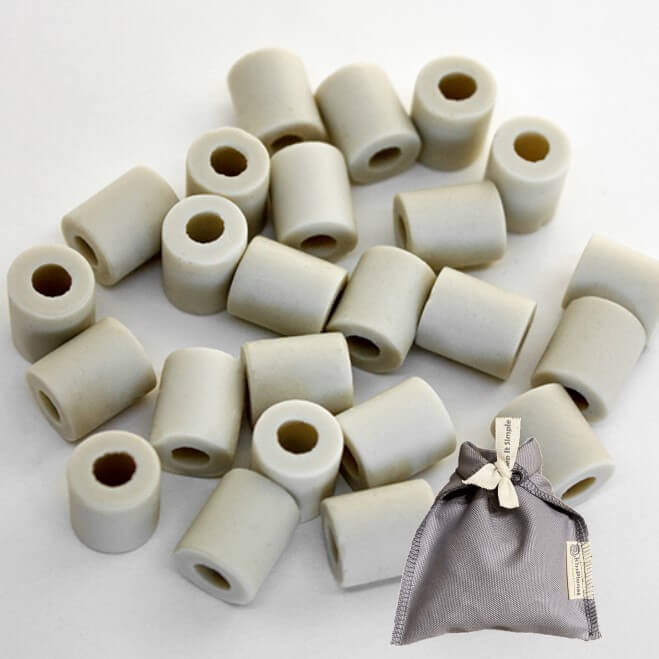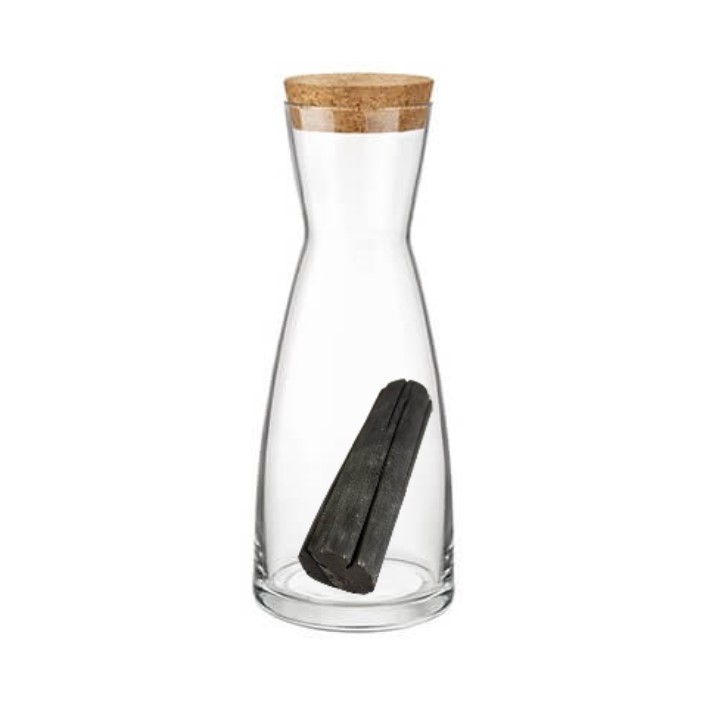Binchotan activated charcoal: thanks to its high porosity, it is a process of adsorption of molecules on its surface to purify water. It is not easy to imagine its porosity at first glance on the product (a long hard black stick)... Here is the system in more detail below.
CONTENTS
How does activated charcoal work?
The binchotan or activated charcoal stick
Adsorption of binchotan
Tap water purification and bacteria
What are the effects of activated charcoal on water?
Binchotan and dangerous molecules in water
The effectiveness of activated charcoal on tap water
How does activated charcoal work?
Binchotan
Activated charcoal has a structure comparable to that of certain ceramics: it is a very porous body containing a very large number of small cavities that communicate with each other.
These cavities are produced during its manufacturing process
The contact area available to 'stick' the ions, just like a flycatcher, is truly multiplied, much larger than the volume of the carbon block visible to the naked eye.
Adsorption of binchotan
The adsorption mechanism (yes, with a "d" and not a "b") of ions in water works like magnets that attract each other. The electrically charged ions stick to the surface of the activated charcoal and are no longer suspended in the water.
This process removes unwanted molecules from the tap water. It purifies our drinking water by removing any danger of contamination.
Tap water purification and bacteria
At first it is compared with ceramics. There is another system of water purification that uses ceramic beads. These beads are made up of mini cavities created during the firing of the ceramic, and are therefore also highly porous. By their nature, ceramic beads have the property of attracting and destroying certain bacteria but do not remove chlorine.
These are the 2 main differences between activated charcoal and ceramic beads.
Other effective tap water filtration techniques exist and are detailed in the following document: "How to filter tap water naturally".
What are the effects of activated charcoal on water?
Binchotan and dangerous molecules in water
Activated charcoal is a water clarification system and filters :
• Chlorine
• Chloroform
• Agricultural chemicals
• Organic substances
• Sediments
• Magnesium
The contact area available to 'stick' the ions, just like a flycatcher, is truly multiplied, much larger than the volume of the charcoal block visible to the naked eye.
This is why a 'small' piece remains effective for a long time. And it is this adsorption property that gives activated charcoal its name.
The effectiveness of activated charcoal on tap water



